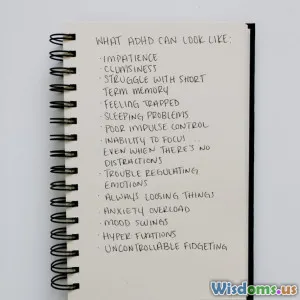
Navigating Life Transitions with Grace
7 min read Explore how to navigate life transitions with grace using practical psychology strategies. (0 Reviews)
Navigating Life Transitions with Grace
Life is a series of transitions—some planned, others unexpected—ranging from personal milestones like marriage, childbirth, or career changes, to more challenging alterations such as divorce, relocation, or loss. These shifts can feel overwhelming, but how we navigate them can spell the difference between thriving or merely surviving. In this article, we’ll explore practical strategies supported by psychological principles to help you move through life’s transitions with grace.
Understanding Life Transitions
The Nature of Transitions
A life transition is an event or a non-event that results in change. Dr. Nancy Schlossberg, a leading authority on adult transitions, classifies these changes into personal, interpersonal, and environmental categories. For example, starting a new job can be an exciting personal transition, changing living locations can alter interpersonal dynamics, and the changing economy can affect one's daily environment.
According to research published in the International Journal of Behavioral Science, transitions often invoke feelings of stress, anxiety, and uncertainty. This is especially true when the transition is unexpected. However, awareness and acknowledgment of these feelings are the first steps toward successfully navigating them.
Strategies for Graceful Navigation
1. Embrace Emotional Fluidity
Life transitions impact us on an emotional level. It's essential to give yourself permission to feel a range of emotions—from joy and excitement to fear and grief. According to psychologist Dr. Susan David, author of Emotional Agility, often the most taxing part of transitions is the attempt to resist these emotions. By allowing yourself to fully experience your feelings, you cultivate resilience.
Real-world Example: When Amanda, a 35-year-old marketing executive, experienced a sudden layoff, she spent her first week feeling angry and lost. Through journaling, she expressed her emotions instead of suppressing them, ultimately helping her to pivot to a more fulfilling freelance career.
2. Develop a Support System
During times of transition, surrounding yourself with supportive friends, family, or professionals can be vital. Research shows that social support can enhance emotional well-being. Dr. Sheldon Cohen at Carnegie Mellon University discovered that feelings of social support can even strengthen one’s immune system.
Action Point: Consider scheduling regular check-ins with close friends or joining a support group related to your transition—be it a career change, a move, or a relationship shift. Talking about your experiences not only alleviates anxiety but may present entirely new perspectives that you hadn’t considered.
3. Practice Mindfulness and Self-Care
Incorporating mindfulness techniques helps ground us during transitions where the future may appear uncertain. Mindfulness practices, such as meditation and breathing exercises, allow us to become aware of our thoughts and feelings without judgment. A study from the University of Massachusetts found that mindfulness-based stress reduction programs significantly improve mental well-being.
Self-Care Reminder: Allocate time for yourself every day. This could be spending time in nature, practicing yoga, or even indulging in hobbies that bring joy. As psychologist Dr. Brené Brown notes: “You can’t selectively numb emotion; when you numb negative emotions, you also numb positive emotions.” Prioritize self-care to improve overall emotional resilience.
The Power of a Growth Mindset
4. Redefine the Narrative
Your perspective shapes your experience. Instead of viewing life transitions as disruptions, recognize them as opportunities for growth and learning. Psychologist Carol Dweck introduced the concept of a growth mindset—believing that abilities and intelligence can be developed. By reframing challenges as learning experiences, you enhance your capacity to adapt.
Practical Application: When faced with a stagnant career, instead of viewing it negatively, see it as a chance to upskill or explore new possibilities. For example, Simon, an IT professional, embraced a coding boot camp after losing his job, catapulting his career in tech by adopting newfound capabilities.
5. Set Clear Objectives
Life transitions can be chaotic, making it difficult to find clarity. To counteract this, set specific, achievable goals related to your transition. Research by Edwin Locke demonstrated that goal-setting directly correlates with improved performance and success. By establishing clear action items, you can create focus amid uncertainty.
Example: If you're transitioning to a new job, establishing opposite objectives—such as researching the company's culture, connecting with potential colleagues on LinkedIn, and learning about new industry technologies—provides a roadmap that alleviates anxiety.
Reaping the Rewards of Transitions
6. Celebrate Progress
Throughout your transitional journey, make it a habit to acknowledge and celebrate your achievements, both big and small. This reinforcement can boost your motivation and reinforce positive behaviors. Keeping a journal to track your transitions' milestones can enhance clarity and serve as a source of inspiration.
Quote Connection: As author Anne Lamott states,
Rate the Post
User Reviews
Popular Posts





















